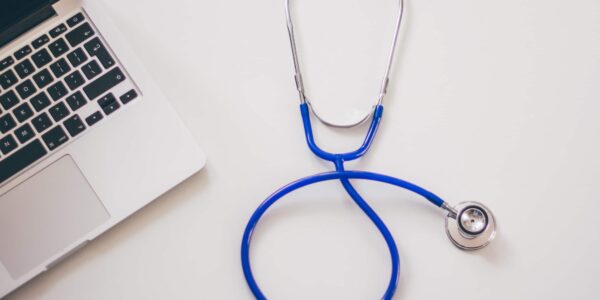
CASE STUDY – IMPROVING PATIENT FLOW EFFICIENCY AND PATIENT COMMUNICATION
CHALLENGES
- Communication with patients was proving both time-consuming and leading to delays in response
- Communication with providers was inefficient surrounding patient care and referrals
SOLUTIONS
- OhMD Texting to streamline patient communication, from symptoms to test results
- OhMD Colleague Chats standardizing communication channel between providers and staff
RESULTS
- Referral communication time no longer days but minutes from the referring provider
- Patients at ease knowing they’ll receive a speedy response
- Minimizing co-pays by communicating test results via text
- Dr. Miller voted Utah’s top cardiologist
Simple text messaging helped boost patient satisfaction – and patient flow efficiency – for Utah’s #1 ranked cardiologist
Patient flow efficiency can have huge impact on both patient satisfaction when it comes to their care. Strong patient communication plays a critical role. Yet too often, that’s the first thing to fall through the cracks. “We all want to do the right thing and get a message to someone, and it comes down to the energy required to send that message,” says Stephen Miller, a cardiologist at Intermountain Heart Center.
We no longer use the EMR for routine communications. We use OhMD.
– Dr. Stephen Miller, Cardiologist
In search of a tool to make patient and clinical communication as easy as possible, Miller tried OhMD. There was some initial pushback from the IT department, but once Miller started sharing OhMD with other doctors, he says, “It just started taking off. The interface is so intuitive, you can’t do it incorrectly.”
Miller saw immediate gains in patient flow efficiency. Before implementing OhMD, he would often have a dozen or more daily messages he needed to respond to through the hospital’s EMR system. “There’s a fairly big time delay when you’re messaging back and forth through the EMR,” he says. Resolving even fairly simple questions often took a day or two. OhMD virtually eliminated those delays, and quickly became the standard for communication between Miller and his colleagues. “We no longer use our EMR for routine communication,” he says. “We use OhMD.”
All Miller’s staff now have their own OhMD account, and productivity is way up. “When you have one place to check every message, it’s a much more efficient system.”
And being able to communicate freely, quickly, has huge implications for quality of patient care.
“The freedom of information between providers has been much better than I anticipated,” Miller says. When he refers patients for a hospital procedure, he may or may not get a followup fax a few days later. But he almost always gets a message via OhMD much sooner, filling him in about what’s happened so he’s ready the next time he sees the patient.
For patients, the introduction of OhMD has been “a transformative experience,” Miller says. “On a regular basis, I hear from patients that their other doctor or cardiologist was not very responsive. They are overwhelmed and grateful for OhMD—it’s a far easier way to communicate.” Because they get an almost-instant response, patients prefer communication through OhMD over calling or sending a message through the EMR patient portal. And even though Miller may get more messages than he used to get through the EMR, he says, “That’s a good thing, because patients love that access. And because OhMD [lets me share messages with staff], I’ve given them instructions on how to react, so that most messages don’t require my input at all.”
OhMD has created a level of comfort for heart patients who used to be afraid to leave town because they might not be able to reach their doctor quickly if they had a problem. “Just to navigate to the right person, they immediately faced a phone-tree barrier,” Miller says. Now thanks to streamlined patient communication using OhMD, they know they can get through to someone right away, any time . “It’s like a security blanket.”
It’s also saved patients money by minimizing office-visit co-pays. “By communicating test results through OhMD, we save them the copay, and it helps clear the office out,” Miller says. “And if worrisome symptoms can be resolved by text message, that can mean fewer trips to the ER. I don’t want a patient texting to say that they’re having chest pain,” Miller says. “It’s not for serious symptoms. But I don’t need a patient to go to the ER for a modest increase in blood pressure or heart rate.”
After implementing OhMD, Miller was voted best cardiologist in the state. “There’s a reason why,” he says. “And OhMD had a big impact.”
